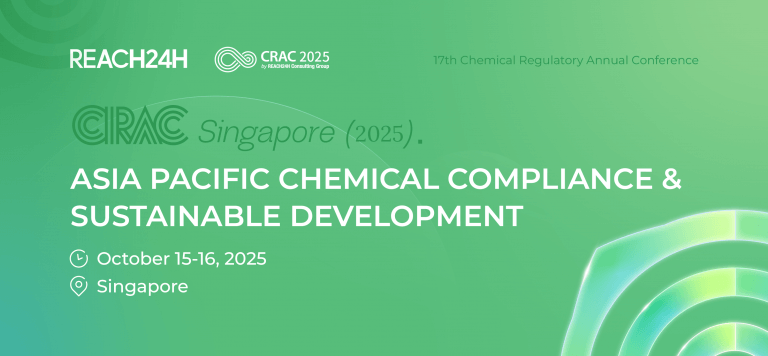Introduction
At the 17th Chemical Regulatory Annual Conference (CRAC China 2025), Vietnam’s latest regulatory developments took center stage. Government officials and industry leaders shared valuable insights on Vietnam's customs regulations and modernization, the implementation of the Chemical Law (69/2025/QH15), enforcement of supporting regulations, the Restricted and Prohibited Chemical Import and Export List, permit management, and the impact of digitalized customs oversight.

Modernization of Customs Supervision: Digitalization and Risk Tiering System
Mr. Tuan Thanh Le from the Customs Supervision Department of the Vietnam General Department of Customs highlighted the country’s progress in customs supervision. Vietnam has fully digitalized the “declaration-approval-release” process through the VNACCS/VCIS Automated Clearance System and the National Single Window (NSW). Additionally, the Green-Yellow-Red Risk Tiering System allows for differentiated inspections based on enterprise compliance records and the risk attributes of goods.
Key Benefits of Digitalized Customs Oversight
Streamlined Procedures for Compliant Enterprises: Companies with strong compliance records experience reduced clearance times and fewer inspections, significantly lowering trade compliance costs.
Stricter Control of High-Risk Goods: Regulated chemicals are subject to detailed document reviews and physical inspections. The regulatory approach has shifted from pre-entry inspections to post-entry risk audits, balancing safety supervision with trade efficiency.
Compliance Requirements for Exporting to Vietnam
Mr. Tuan Thanh Le outlined several compliance points for enterprises:
Declaration Requirements: Importers must submit the Chemical Import Declaration Form (Annex VI of Decree No. 113/2017/ND-CP) through the NSW platform and prepare the Vietnamese Version of SDS. For non-commercial goods, the Arrival Notice may replace the Commercial Invoice.
Permit Management: CWC Schedule 1 Chemicals are generally prohibited from import/export unless specifically approved by the Prime Minister; Schedule 2 Chemicals, Schedule 3 Chemicals, and Industrial Precursors require import/export permits from the Ministry of Industry and Trade (MOIT). Goods cannot clear customs without these permits.
Full-Life Cycle Compliance: Before importation, verify the Restricted and Prohibited List. During customs clearance, ensure accurate declarations and cooperate with sampling. After importation, submit the Annual Report on Usage and Quantity to the MOIT.
Conclusion
Vietnam’s customs supervision has undergone a significant transformation, moving toward digitalization and risk-based management. The VNACCS/VCIS Automated Clearance System and the National Single Window (NSW) streamline the import–export process for compliant enterprises, while the Green–Yellow–Red Risk Tiering System targets high-risk goods for stricter inspections.
For businesses exporting chemicals to Vietnam, adhering to accurate declaration procedures, securing necessary permits, and maintaining robust compliance records is essential. By understanding and leveraging these digitalized customs processes, enterprises can achieve smoother clearance, lower compliance costs, and effectively navigate the evolving regulatory environment.
For more information and inquiries, please feel free to contact us at customer@reach24h.com.





